How Preston's war memorials were created
and live on Freeview channel 276
There is no doubt that Preston and the surrounding places have always been keen to remember those servicemen and women who died for their country.
After the First World War one of the first communities to commemorate their losses were the members of the St Matthews church congregation who, in December 1919 before a crowd of 1,000, unveiled a memorial window to the fallen soldiers and sailors from the church and school.
Advertisement
Hide AdAdvertisement
Hide AdThe Vicar, the Rev C Townson, reminded those gathered that nearly 700 men of St Matthews had answered the call and that 99 of them had died performing their duty. The two light window depicting the Archangels Michael and Gabriel holding the scroll of honour inscribed with their names.
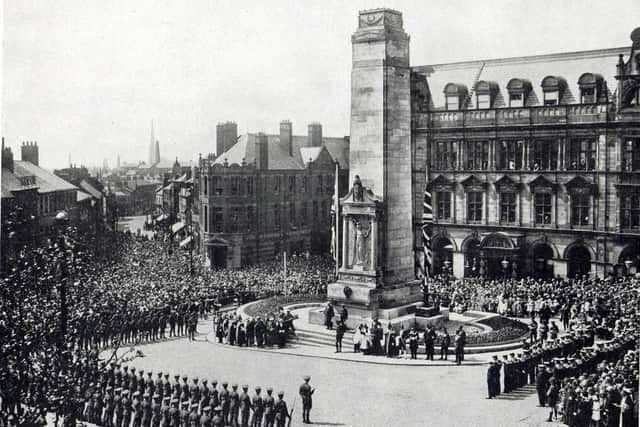

Should you visit the neglected graveyard of St Paul’s church – once the home of Rock FM – you will see in one corner a memorial cross erected by the parishioners of St Paul’s in honour of the 125 men of the parish killed during the Great War.
It was unveiled at the end of August 1920 by Lt Col S Simpson, who read out the names of each of the men. He then told the large crowd gathered around the monument that some of those killed were personally known to him.
Those men having volunteered to join the 2nd West Lancashire Royal Field Artillery Brigade which he raised in the dark days of 1915. Having journeyed to France with them he was all too aware that they fought so magnificently and showed great devotion to duty.
Advertisement
Hide AdAdvertisement
Hide AdOn the same evening Emmanuel Church was packed as parishioners paid tribute to their war victims. Two memorial windows were unveiled in the Baptistery and the Rev WD Richards quoted the biblical text, ‘Greater love hath no man than this, that a man lay down his life for his friend.’
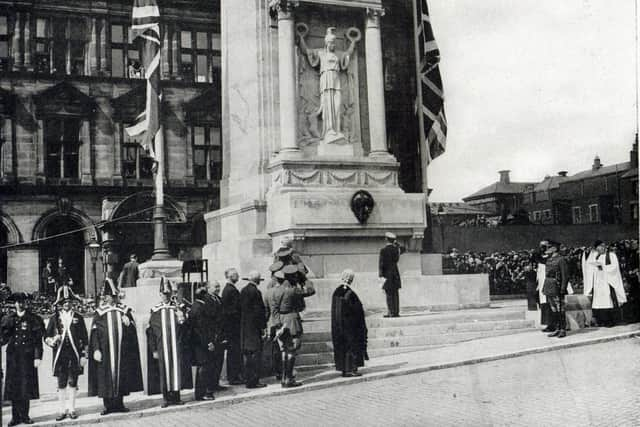

One month later a large crowd gathered outside the church of St Mary Magdalene on Ribbleton Avenue to witness the unveiling of a war memorial costing £200 to honour the 18 men of that parish who had been killed during the Great War.
The monument is in the shape of a stone cross made of light Boltonwood stone and stands more than 12ft high and sits on a base 5ft square with three steps at the front. A stone laurel wreath hangs over the cross, and a sword runs parallel with the face of the column. Three bronze panels recording the names of the fallen.
Also at the forefront of the memorial tributes were the people of Penwortham who in March 1921 unveiled a memorial to the men of the town who served during the Great War the ceremony being performed by Maj Gen TH Shoubridge.
Advertisement
Hide AdAdvertisement
Hide AdA procession of relatives and friends of the fallen men walked through Penwortham to the Liverpool Road site headed by the Preston Discharged Sailors and Soldiers Band. The war memorial, takes the form of a granite rustic cross, was erected by public subscription.
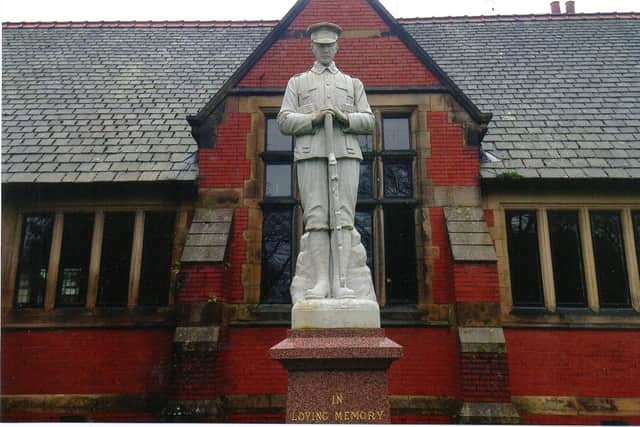

The names of the fallen are inscribed on a stone tablet, while in a recess was placed a parchment record of all who had served in the war. In all 144 names were recalled with 72 of those having died in the conflict.
Within the grounds of County Hall, off Fishergate Hill, in Preston, where Christ Church once flourished, there is a war memorial cross of grey Cornish granite. It stands 12ft tall in the old graveyard and was unveiled in July 1921 by the Rev TA Schonberg who stated it was a moment of proud remembrance of the 69 men connected with the church who had fallen.
The memorial had cost £280 to erect funded by the generosity of the parishioners. Like so many others the memorial cross at Christ Church had another brass plaque added after 1945 recording yet more victims from the Second World War.
Advertisement
Hide AdAdvertisement
Hide AdOn the November anniversary of the Armistice in 1921 the unveiling of a wayside Celtic cross was carried out by Lt Col W Bowes in memory of the nine men of the village of Broughton who gave their lives in the Great War. The War Memorial stands 16ft tall and is constructed from Longridge stone. The names of the fallen being engraved on a plinth, surrounded by a pavement with steps from the roadway. It had cost more than £300 and was paid for by the fund raising activities of the villagers.
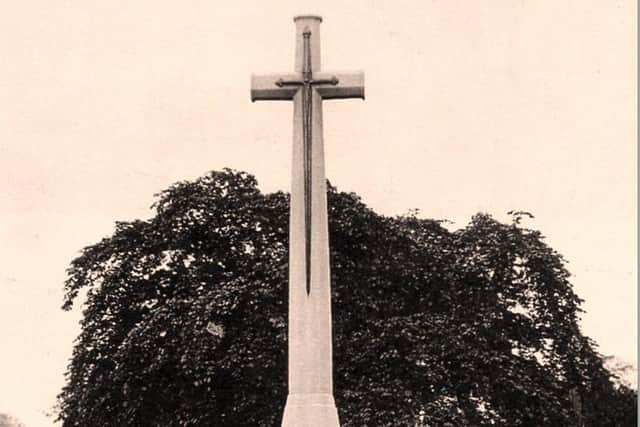

On Meadow Street at the front of St Ignatius RC Church (nowadays the Cathedral of St Alphonsa) stands a War Memorial dedicated to the men of that parish who had been killed in the Great War. It was unveiled in late March 1922 by Col John Shute assisted by the Rector Father Frederick Parry. The memorial, built of Portland stone, stands more than 22ft high and is mounted upon a moulded plinth.
A crucifix stands aloft with the figures of a sailor and soldier on either side. On the bronze plaques surrounding the memorial are the names of the 228 men of the parish who gave their lives in the conflict and it was paid for by subscriptions from the parishioners.
The memorial to the war dead of the parish of St Wilfrid’s RC Church and the closely connected Preston Catholic College is a large marble crucifix set on an altar and flanked by two tablets which record the names of 114 men killed during the First World War.
Advertisement
Hide AdAdvertisement
Hide AdThis includes 48 who were ex pupils at the Jesuit run Catholic College. The memorial was unveiled by Father Kopp in April 1922. On the sanctuary floor nowadays are two more tablets commemorating the dead from the church and the college during the Second World War.
A service of dedication and the unveiling of a War Memorial took place at St Mary’s CoE in Preston in the first week of August 1922. Within the now closed church a memorial plaque contains the names of the 80 men who lost their lives in the Great War. Six of them died in the UK and are buried in Preston Cemetery the others laid to rest in foreign fields.
In late May 1925 an unveiling ceremony took place in Preston Cemetery of the ‘Cross of Sacrifice’ which was erected by the Imperial War Graves Commission in memory of upwards of 320 sailors, soldiers and airmen of the town who died during the First World War and are buried therein.
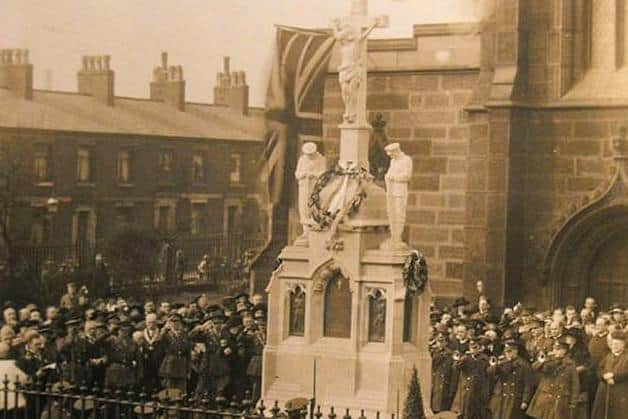

The cross, draped in the Union Jack, was unveiled by the pulling of a cord by the Mayor of Preston, Alderman John Roland Hodgson who spoke of the deep devotion of the men whose died. Around the base of the centre portion is inscribed, ‘Their names liveth for ever’. The cross, which is of Darley stone, with a bronze sword of Justice embedded, stands 14ft high.
Advertisement
Hide AdAdvertisement
Hide AdThe harsh reality of war touched all classes of society and among the victims of were a number of orphaned boys who had spent their formative years at the Harris Orphanage in Fulwood.
The long serving governor of the orphanage was Col Thomas Riley Jolly who, having overseen the training and education of hundreds of youngsters, had been particularly proud when so many old boys willingly enlisted for war duty. After the war Col Jolly was instrumental in the planning of a suitable memorial to honour the memory of those killed. His fund raising efforts assisted by old boys and girls of the orphanage led to Col Jolly unveiling the soldier monument in late October 1924 in the orphanage grounds.
The impressive white marble figure in the form of a youthful soldier standing with his firearm reversed on a pedestal of polished granite, with a dedication inscribed in letters of gold, was to be a lasting reminder of those who had fallen.
Col Jolly, speaking with visible emotion, explained how when the call came 127 boys had enlisted and of those 18 had made the supreme sacrifice, with a large number of others being wounded and disabled. He said he was proud of them all and their brave deeds that had been recognised with at least seven military medals. Sadly, more names had to be added to the orphanage memorial death toll after the Second World War with four former orphan boys and a girl giving their lives.
Advertisement
Hide AdAdvertisement
Hide AdIn the centre of Lostock Hall the War Memorial on Hope Terrace was unveiled in December 1924 by Col CJ Trimble who spoke of the gallantry and self sacrifice of the victims. It nowadays commemorates the lives of 83 servicemen lost in both world wars. The memorial depicts the figure of ‘Peace’ mounted on a pedestal of granite and stands 15ft tall.
Just around the corner on Brownedge Road is another striking war memorial that was rescued from its old Lostock Hall Methodist Church site, and it contains the names of 79 who were involved in the First World War conflict. Of those 11 men were killed, 66 returned from battles, and it also includes the names of two nurses, Jesse True and Ethel Calleley who nursed the stricken.
It is doubtful that a larger crowd had ever gathered in the Preston Market Square than that assembled in mid June 1926 to witness the unveiling of the Preston War Memorial. A dense crowd of people even filled the adjoining streets. In the centre of the square the military gathered and the memorial was lined with ex-servicemen and women.
The man chosen to perform the ceremony was the distinguished Admiral of the Fleet Earl Jellico, who pulled the cord which saw the Union Flag fall away to uncover the sculptured figure of Victory. In his speech he remarked that it was a great honour to take part in a ceremony in recognition of the almost 2,000 men of Preston who had given their lives for King and country during the Great War.
Advertisement
Hide AdAdvertisement
Hide AdThe memorial was built to the design of Sir Giles Gilbert Scott who was the grandson of Sir George Gilbert Scott, the man who had designed the Preston Town Hall of Victorian days. The sculptor who toiled long to create the 70ft tall monument was Henry Alfred Pegram.
The memorial carved from Portland stone has a square slightly tapered column and at the front is the tableaux that depicts grieving Victory in armour, holding aloft two laurel crowns, surrounded by representations of the dead.
At the very top of the monument there is sculptured an empty tomb with cherubs and strands of foliage carved around it. The names of the servicemen honoured are inscribed on marble tablets within the Harris Museum, which Roll of Honour is on permanent display on the ground floor.
Preston Military Heritage by Keith Johnson is book published by Amberley priced £14.99.